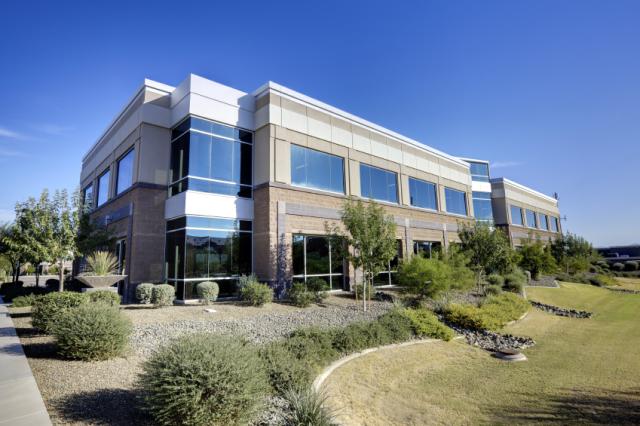
Building ventilation and the Coronavirus
Slipstream has received several questions regarding building systems and preventing the spread of Coronavirus. Below are answers from our research team about what you can do to prepare your building ventilation system.
Q: Does the coronavirus spread through the air?
A: According to both the Center for Disease Control (CDC) and the World Health Organization (WHO), SARS-CoV-2, also known as the Coronavirus and is the virus which causes COVID-19, may be transmitted through airborne aerosols. Both organizations state that while there aren’t enough direct studies to verify that this is a way the virus is transmitted, “COVID-19 seems to be spreading easily and sustainably in the community (“community spread”) in many affected geographic areas,” implying spread through airborne aerosols.
Q: What are airborne aerosols?
A: When someone breathes, talks, coughs, sings, or sneezes, you release droplets of water from mouth and nose. These droplets can carry viral particles. Many of the large droplets are heavy and will fall to the ground after about six feet. These droplets can potentially carry the virus if someone is infected. This is why it is recommended to wear masks and to stay six feet away from others. However, some of the smaller droplets are light enough to stay suspended in air. These are a type of aerosol and because they are light can spread much farther and potentially through the building ventilation system.
Q: Does coronavirus spread through the building ventilation system?
A: Both the CDC and the WHO stated that it is sufficiently likely the coronavirus can spread through airborne aerosols. Airborne aerosols can spread through the building ventilation system, therefore it is sufficiently likely that transmission though the HVAC system is possible. With that said, there is not sufficient research that shows whether people can catch the coronavirus from aereosols spread through the HVAC system. ASHRAE, formerly the American Society of Heating, Refrigeration, and Air-Conditioning Engineers, has taken the position that “changes to building operations, including the operating of heating, ventilating, and air-conditioning systems, can reduce airborne exposures.”
Q: If I make changes to my building ventilation system do I still need to socially distance and wear a mask?
A: Yes. There is evidence that the coronavirus spreads significantly through large respiratory droplets, which spread about six feet from people. Studies are starting to show that even with a “good” ventilation system, the virus is still spreading through the air.
Q: What changes should I make to my building ventilation system?
A: ASHRAE offers guidance for building owners and facility managers on how they can make changes to their building and building ventilation system to reduce the transmission of the coronavirus. ASHRAE provides guidance for different building types, including schools and universities, multifamily buildings, commercial buildings, and healthcare facilities.
In general for non-healthcare buildings, ASHRAE recommends preparing for a scenario with “epidemic operating conditions in place” and “post-epidemic conditions in place.” In both scenarios, recommendations follow a similar pattern:
- Form a building readiness team.
- Ensure your heating, cooling, and ventilation systems are properly maintained.
- Follow CDC recommendations for reopening your building.
- Consider hiring a Test and Balance (TAB) Company to verify the airflow throughout your building.
- Consider hiring a commissioning agent (Cx) to verify your equipment and systems operations.
- Consider reviewing BAS control systems and implementing HVAC mitigation strategies through building controls.
- Prepare a deficiency log and work to eliminate deficiencies.
- Identify HVAC mitigation strategies for the system. These include:
- Schedule a 2-hour pre-occupancy air flush and 2-hour post-occupancy air flush.
- Disable demand control ventilation controls.
- Use natural ventilation (open windows) if possible.
- Increase outside air to reduce or prevent air recirculation between spaces.
- Improve filtration to MERV 13 filters or better.
- Add upper air Ultraviolet Germicidal Irradiation (UVGI) to rooms.
- Add UVGI to air handling units.
- Raise space humidity levels to between 40-60%.
- Use portable air filters (HEPA and/or UVGI).
Refer to the ASHRAE resources for more specific guidance.
Q: I’ve seen a lot of advertisements about new HVAC technologies that claim to prevent or reduce the spread of COVID. Do these work?
A: ASHRAE considers the following technologies to have “Evidence level A.” This means that there is a significant amount of evidence that this technology can reduce viral transmission. These technologies are:
- Air filters - MERV 13 filters or better
- Ultraviolet Germicidal Irradiation (UVGI)
Other technologies may reduce virus transmission, but do not have sufficient evidence for ASHRAE to recommend them for all buildings. Further research may change whether a new filter technology meets ASHRAE’s “Evidence level A.” Refer to ASHRAE’s position document for more information.
Q: Should I be concerned about the ventilation system when I walk into a building?
A: Ventilation systems don’t prevent the spread of the virus, they only limit the spread. So, wearing a mask and following social distancing will significantly reduce your chances of catching the virus. You can contact the building owner if you have questions on how the building is ventilated and what precautions they have taken for the coronavirus.